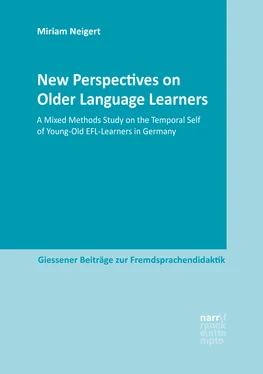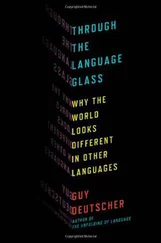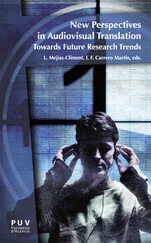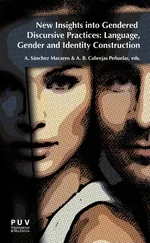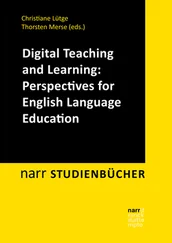2.2 The Young-Old Language Learner
It is even on the cards that by the end of the next century the share of the oversixties not of adults but of the whole population may exceed half, and the expectation of life at birth rise into the nineties or higher. Can we really contemplate a future where a third or a half of all these people are regarded as the fag-end of the population, inactive, uncontributing, in limbo?
- Laslett 1994: 444 -
As mentioned above, the current cohort of young-old, comprised of members of the Silent Generation and Baby Boomers, have higher educational levels than previous generations. Correlating with this, there is also an increased interest in lifelong learning and, in the context of this study, an increased interest in post-retirement language learning (Berndt 2003; Whitnall 2012). Although a uniform view of adulthood in second and foreign language learning research still prevails, a few publications in recent years show the emergence of a distinct focus on older language learners and the first visible traits of a foreign language geragogy (Berndt 2003; Andrew 2012; Ramírez Gómez 2016).
In foreign language research, the majority of studies related to age have almost exclusively focused on language acquisition from childhood to old age and, connected to this, a discussion of a critical period for language learning (e.g. Singleton & Ryan 2004). This type of research has – in concert with the deficit-model of ageing – added to the age-bias in society and the classroom, which also negatively impacts the self-image of older learners and thus their language learning performance (Andrew 2012; Ramírez Gómez 2016). It is for reasons like these that a discussion of a critical period will not be considered here. Other second and foreign language research often ignores older learners as a distinct group and instead focuses on more vocational-related issues of particular adult groups (e.g. migrants or university students) between 25 and 64 (European Commission 2016; Jarvis 2009; Dörnyei 2010; Mercer 2011a; Murray 2005).
To understand the young-old language learner better, it is worth more closely examining what makes them start or continue learning a foreign language after retirement. The social aspect of attending language classes at a physical institution is probably – next to the aforementioned intentions to maintain or enhance psychological well-being, maintaining a stable self-concept, and maintaining quality of life (Walker 2010; Wang & Shi 2015; Schmidt-Hertha 2014: 62ff.; Staudinger & Heidemeier 2009) – one of the most important motivational factors (Murray 2011; Schnurr & Theisen 2009; Lang et al. 2012). However, as Ramírez Gómez (2016: 140) points out, this should not make instructors “overestimate the importance of socialization” and ignore the older learners’ main reason for attending a language class and thus neglecting the quality of foreign language instruction (on the outdated conflict between learning and socializing, see also Kade 2009: 59). As we will see in the data analysis (chapters 5 and 6), social reasons can differ in nature; a person can experience socialising within a community of practice (i.e. joining a group with shared goals and identity at a language learning institution) – especially if one’s children have grown up and left the home ( empty nest syndrome ), or, if a person’s social network has become much smaller after leaving the workforce. These are some of the reasons and ways the young-old may look for ways to enlarge or to maintain their social network in these life-changing phases.
Finally, it should be noted that studying the young-old is not without its challenges, some of which will be brought up again in the methodology chapter. The aforementioned minor role of the young-old language learner in language teaching and learning research means that there are few to no existing studies and research instruments available. I will discuss the ways in which existing research instruments need to be adapted or new instruments need to be developed in chapters 5 and 6, hopefully making a crucial contribution by adding older learner-appropriate research designs and instruments to the field of language teaching and learning research. Moreover, in existing gerontological research the majority of studies are longitudinal in nature – to better capture developments of different cohorts and generations. This, however, requires more resources than cross-sectional studies. Cross-sectional studies, such as this study, take a ‘snapshot’ of the current situation of older age groups, which is why outcomes may be limited to the cohorts under investigation. Nevertheless, these outcomes can be a valuable resource to enable both young-old learners and foreign language teachers to become aware of the complexity and constructive nature of age (and self-concept), as well as providing both parties with strategies to enhance the foreign language teaching and learning processes.
3. Self-Concept, Its Temporal Facets, and Foreign Language Learners
In this chapter, I hope to provide the reader with a better understanding of what self-concept is and how its temporal facets play a role in how the young-old in my study conceptualize themselves as foreign language learners. After a discussion of the use and misuse of self-terminology and a look at what concepts mean on a more general level, I will attempt to clarify the meaning of self-concept and the aspects of it relevant to my research project by firstly, considering its structure and formation and, secondly, contrasting it with some commonly investigated self-terms in SLA research.
I would then like to further narrow the focus on self-concept’s temporal aspects, or more specifically, on the idea of the psychological construct of possible selves (Markus & Nurius 1986). How do we perceive the past, present, and future aspects of our self? And related to this, how do we form ideal selves and ought-to selves over time and in what ways do they impact our life course? In the area of second language learning, Dörnyei (2005, 2009) has developed the Second Language Motivational System to find answers to these and more questions regarding the language learner self-concept. This and several other models in current Second Language Acquisition (SLA) research will be discussed in greater detail at the end of this chapter. Out of these models, Dörnyei’s Second Language Motivational System in particular will serve as the foundation for understanding the young-old language learner’s ideal and ought-to L2 selves.
3.1 A Note on Self-Terminology
Of certain fallacies to which the psychologist is exposed by reason of his peculiar point of view – that of being a reporter of subjective as well as of objective facts,
we must presently speak.
- James, 1890: 184f. -
Due to a long history of research in the area of self, a “potpourri” (Klein & Gangi 2010: 2) of terms related to this phenomenon has evolved over the centuries. Most of the self-x terms, such as self-esteem, self-worth, self-awareness or self-confidence, we – as laypersons – tend to use interchangeably in everyday parlance. This may be because we are constantly and naturally preoccupied with our self from an early age and throughout our lives (Hattie 1992: 1f.; Marsh & Hattie 1996b: 446ff.; Mercer 2014: 160). Mummendey (2006: 17) nicely illustrates this with an example for the usage of the term Selbst (self) by ordinary people on a daily basis:
Monika muss mal wieder etwas für ihr Selbst tun, Klaus hat immer noch nicht zu seinem Selbst gefunden, Inge scheint erhebliche Probleme mit dem Selbst zu haben, überhaupt haben Frauen oft immer noch ein schwächeres Selbst als Männer […].1
Читать дальше
